Shoreline Changes along Northern Ibaraki Coast after the Great East Japan Earthquake of 2011
Abstract
1. Introduction
2. Materials and Methods
2.1. Study Area
2.2. Data Collection
2.3. Data Processing
3. Results
3.1. Validation of Shoreline Extraction
3.2. Shoreline Change before and after the Earthquake
4. Discussion
4.1. Shoreline Change: Retreat Due to Subsidence and Tsunami
4.2. Shoreline Change: Recovery after the Earthquake
4.3. Shoreline Change: Remaining Issues
5. Concluding Remarks
Author Contributions
Funding
Institutional Review Board Statement
Informed Consent Statement
Data Availability Statement
Acknowledgments
Conflicts of Interest
References
- Tanaka, H.; Tinh, N.X.; Umeda, M.; Hirao, R.; Pradjoko, E.; Mano, A.; Udo, K. Coastal and Estuarine Morphology Changes Induced by the 2011 Great East Japan Earthquake Tsunami. Coast. Eng. J. 2012, 54, 1250010. [Google Scholar] [CrossRef]
- Udo, K.; Tojo, K.; Takeda, Y.; Tanaka, H.; Mano, A. Characteristics of shoreline retreat due to the 2011 Tohoku Earthquake and Tsunami and its recovery after three years. In Tsunamis and Earthquakes in Coastal Environments; Springer: Cham, Switzerland, 2016; pp. 113–123. [Google Scholar]
- Tojo, K.; Udo, K. Characteristics of Beach Erosion due to the 2011 Tohoku Earthquake and Tsunami and Its Recovery across the Entire Inundated Area. J. Coast. Res. 2016, 75, 1252–1256. [Google Scholar] [CrossRef]
- Mori, N.; Takahashi, T. The 2011 Tohoku Earthquake Tsunami Joint Survey Group (2012) Nationwide post event survey and analysis of the 2011 Tohoku earthquake tsunami. Coast. Eng. J. 2012, 54, 1250001. [Google Scholar]
- Dao, N.X.; Adityawan, M.B.; Tanaka, H.; Sundar, V. Sensitivity analysis of relationship between tsunami disaster and coastal embankment structure. J. Jpn. Soc. Civ. Eng. Ser. B1 Hydraul. Eng. 2014, 70, I_43–I_48. [Google Scholar] [CrossRef]
- Tanaka, H.; Mitobe, Y.; Mori, A. Impact of the 2011 tsunami on the littoral system around offshore breakwaters on Sendai Coast. In Proceedings of the 8th International Conference on Scour and Erosion, Oxford, UK, 12–15 September 2016; CRC Press: Boca Raton, FL, USA, 2016; p. 349. [Google Scholar]
- Udo, K.; Ranasinghe, R.; Takeda, Y. An assessment of measured and computed depth of closure around Japan. Sci. Rep. 2020, 10, 1–8. [Google Scholar] [CrossRef] [PubMed]
- Do, A.T.; De Vries, S.; Stive, M.J. Beach Evolution Adjacent to a Seasonally Varying Tidal Inlet in Central Vietnam. J. Coast. Res. 2018, 34, 6–25. [Google Scholar] [CrossRef]
- Maglione, P.; Parente, C.; Vallario, A. Coastline extraction using high resolution WorldView-2 satellite imagery. Eur. J. Remote Sens. 2014, 47, 685–699. [Google Scholar] [CrossRef]
- Himmelstoss, E.A.; Henderson, R.E.; Kratzmann, M.G.; Farris, A.S. Digital Shoreline Analysis System (DSAS) version 5.0 user guide. Open-File Rep. 2018, 2018, 110. [Google Scholar] [CrossRef]
- Nassar, K.; Mahmod, W.E.; Fath, H.; Masria, A.; Nadaoka, K.; Negm, A. Shoreline change detection using DSAS technique: Case of North Sinai coast, Egypt. Mar. Georesources Geotechnol. 2019, 37, 81–95. [Google Scholar] [CrossRef]
- Hoang, V.C.; Tanaka, H.; Mitobe, Y. Morphological recovery of beach severely damaged by the 2011 great east Japan tsuna-mi. Estuar. Coast. Shelf Sci. 2019, 226, 106274. [Google Scholar] [CrossRef]
- Yanagishima, S.-I. Reason why topography change by tsunami run-up of 2011 Tohoku earthquake is small in Hasaki coast. J. Jpn. Soc. Civ. Eng. Ser. B2 Coast. Eng. 2012, 68, I_706–I_710. [Google Scholar] [CrossRef][Green Version]
- Bruun, P. The Bruun rule of erosion by sea-level rise: A discussion on large-scale two-and three-dimensional usages. J. Coast. Res. 1988, 4, 627–648. [Google Scholar]
- Udo, K.; Takeda, Y.; Tanaka, H. Coastal Morphology Change Before and After 2011 Off the Pacific Coast of Tohoku Earthquake Tsunami at Rikuzen-Takata Coast. Coast. Eng. J. 2016, 58, 1640016-1. [Google Scholar] [CrossRef]
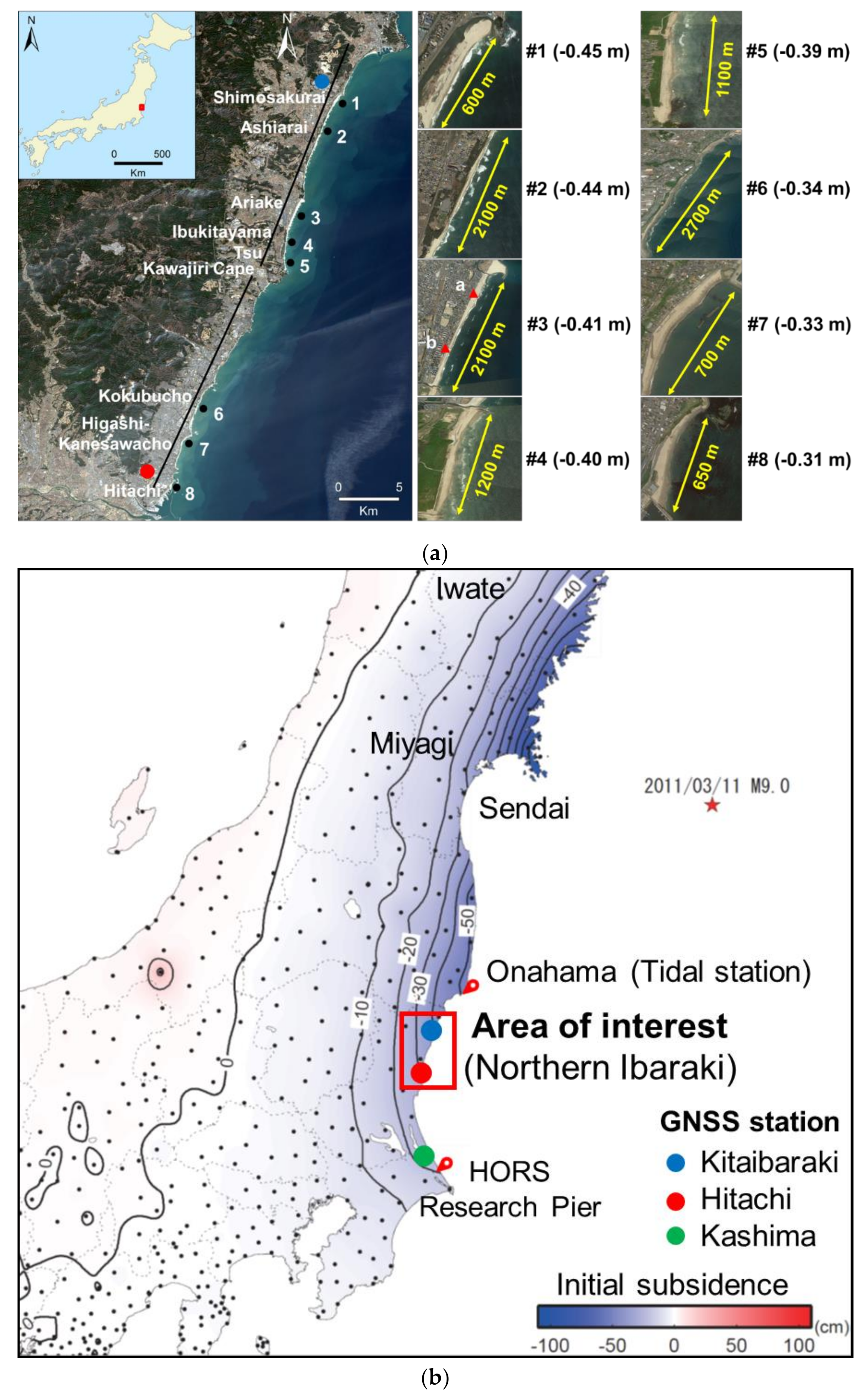

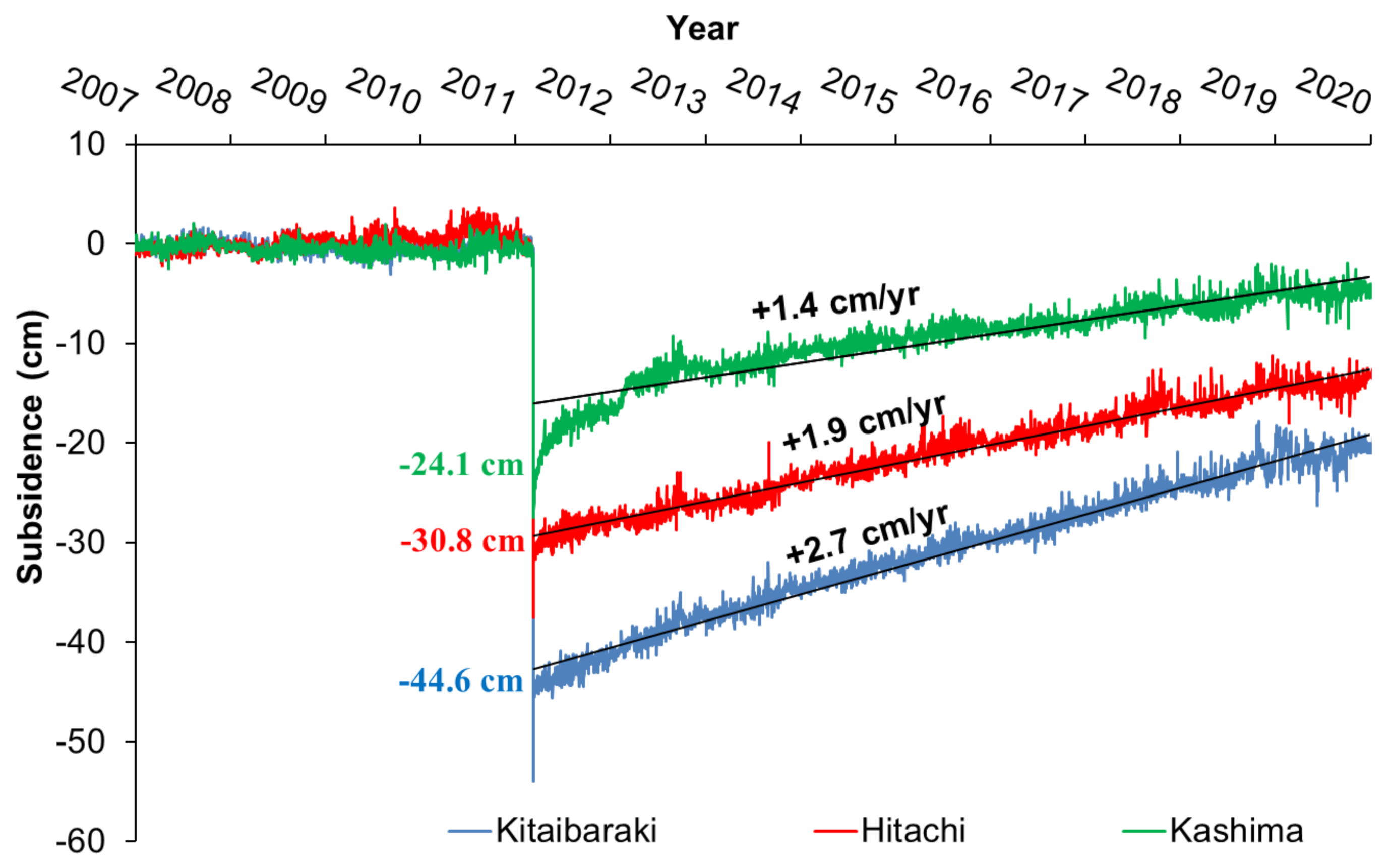

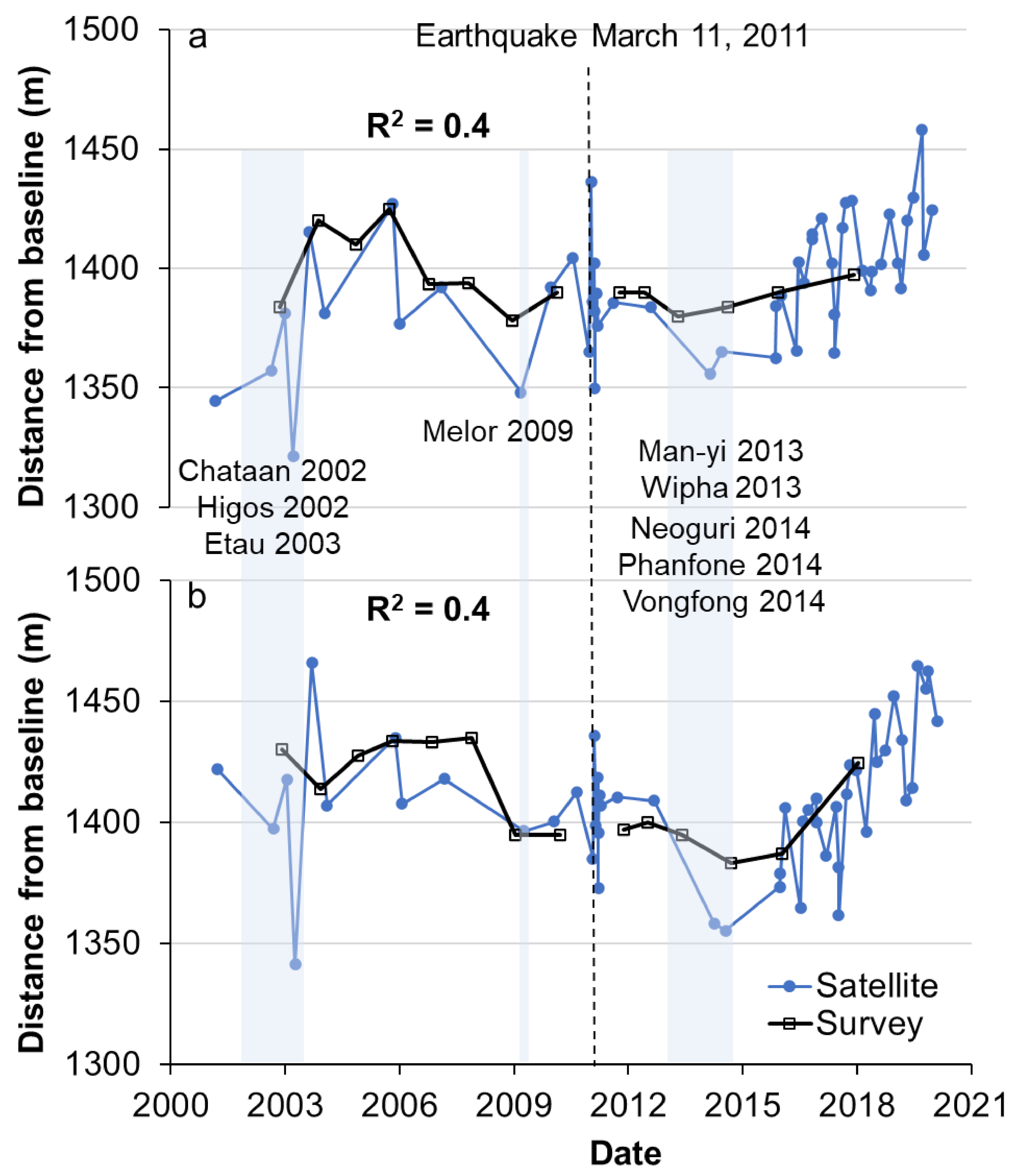



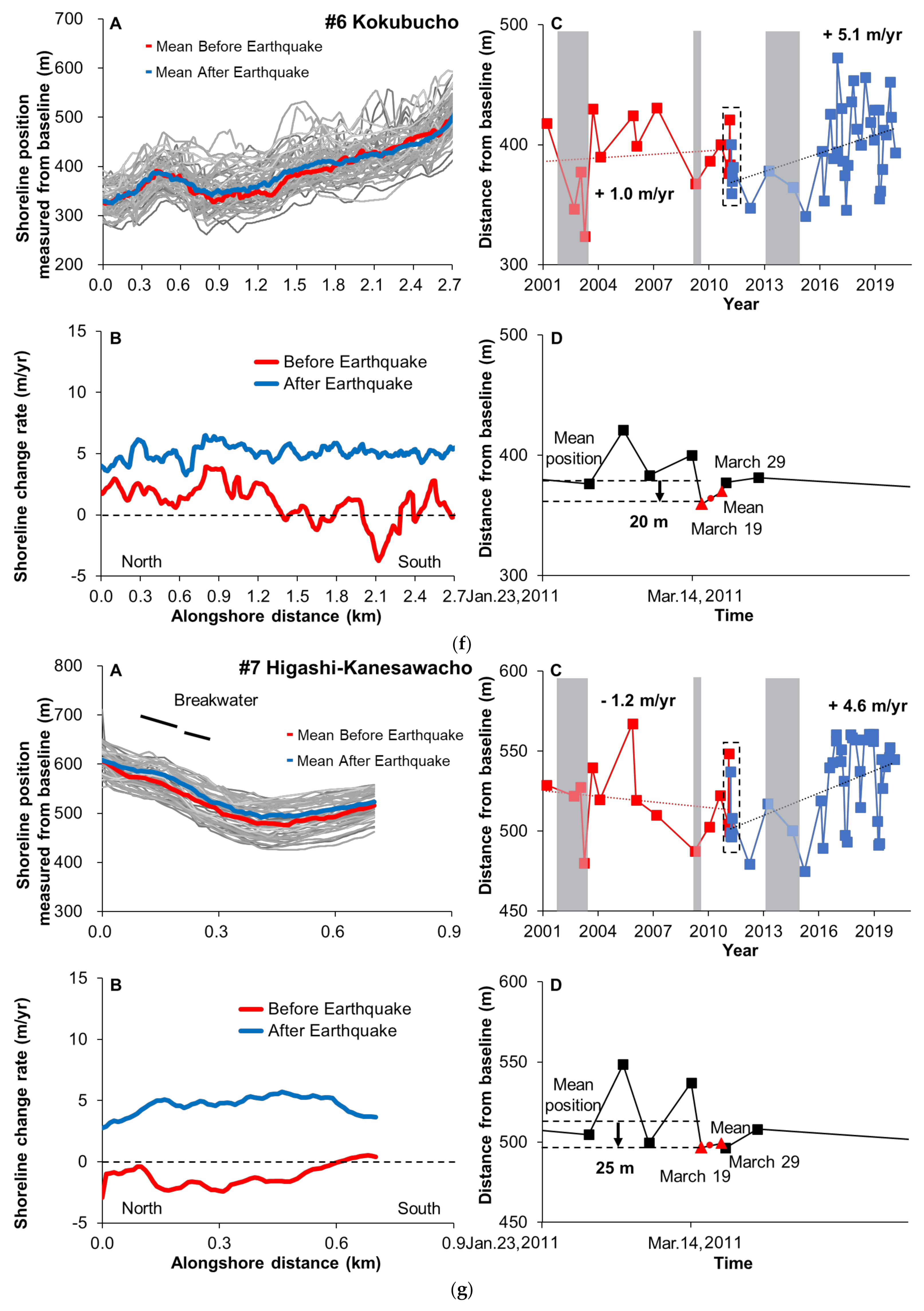
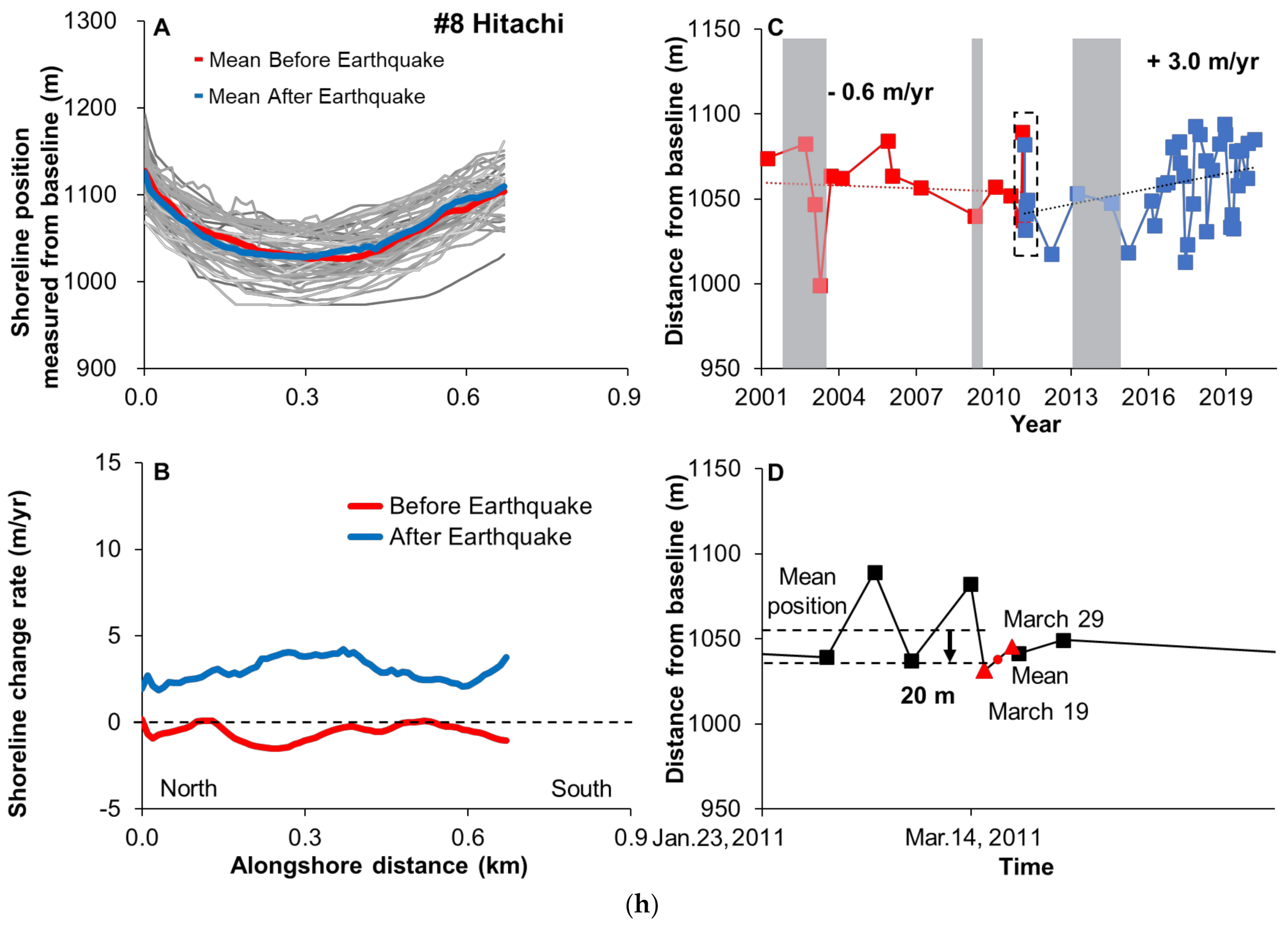
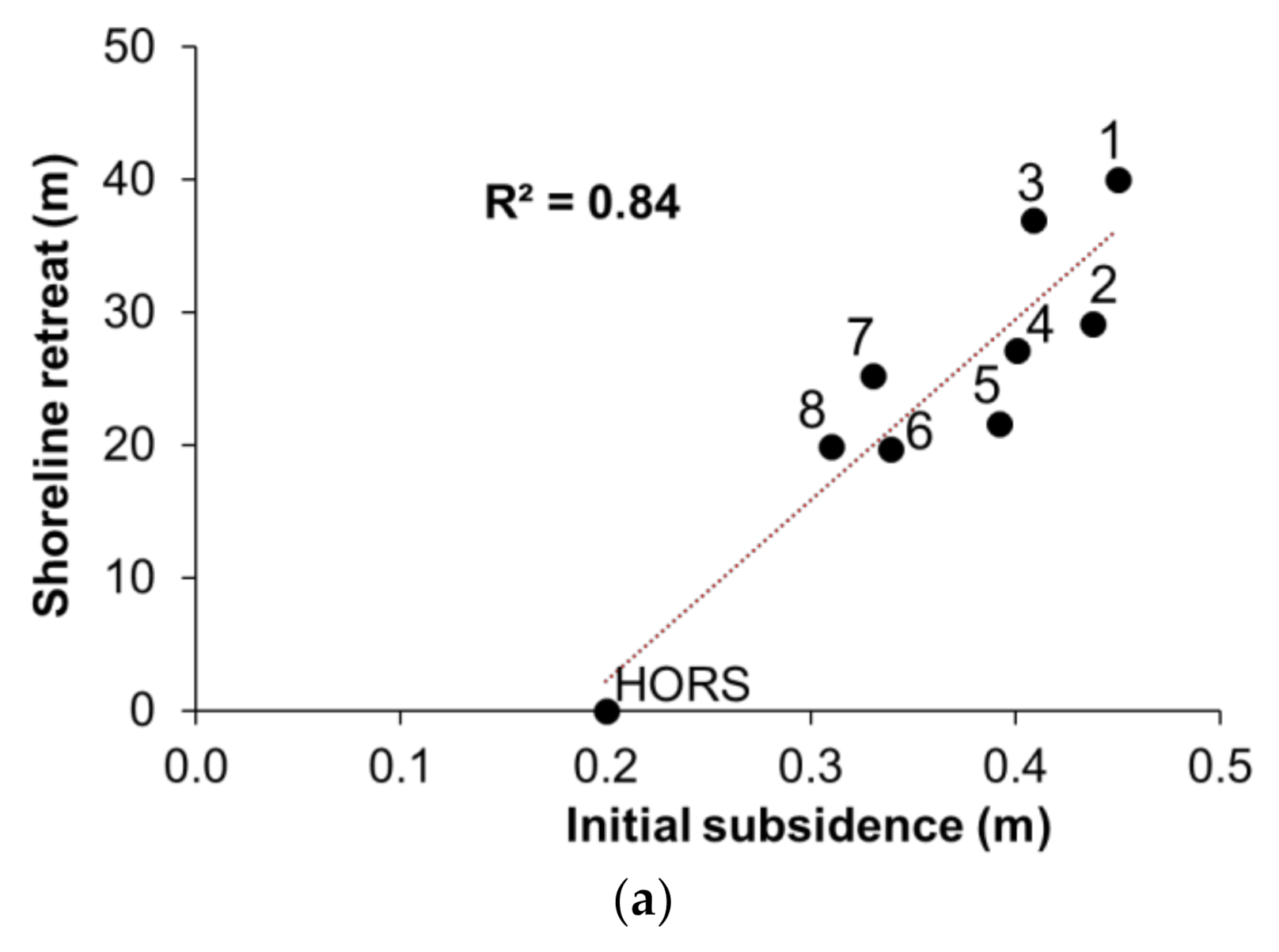
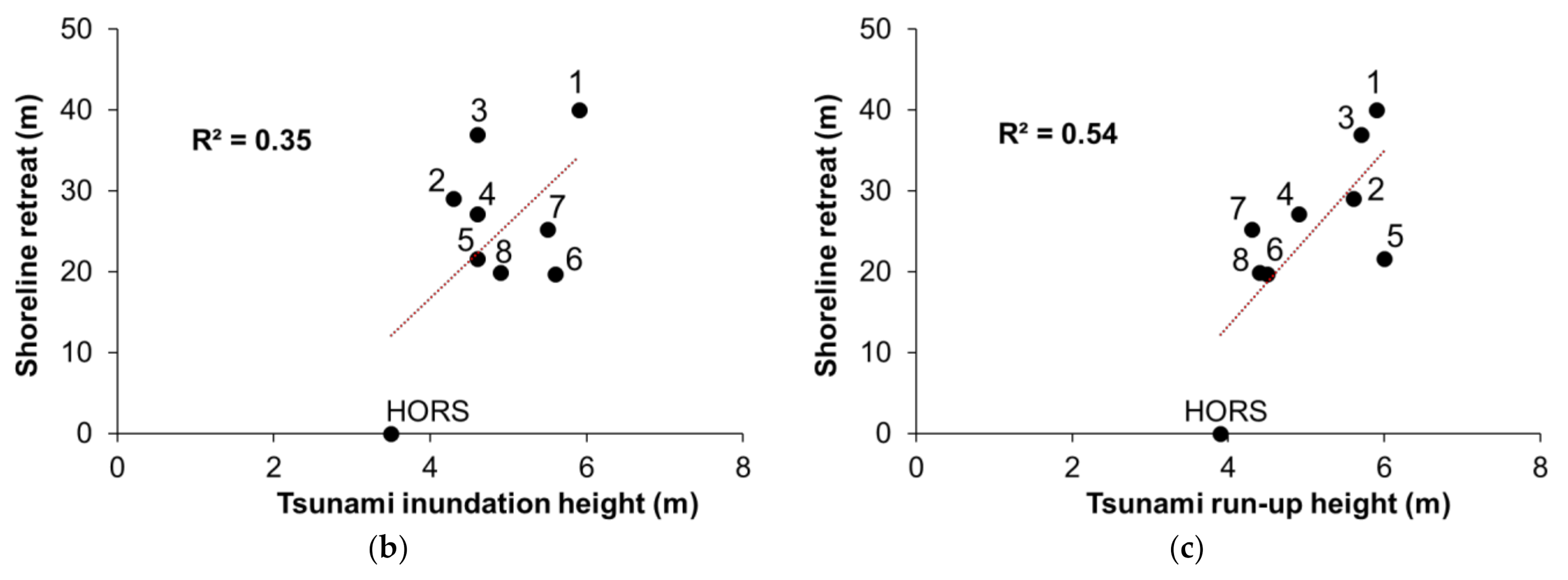
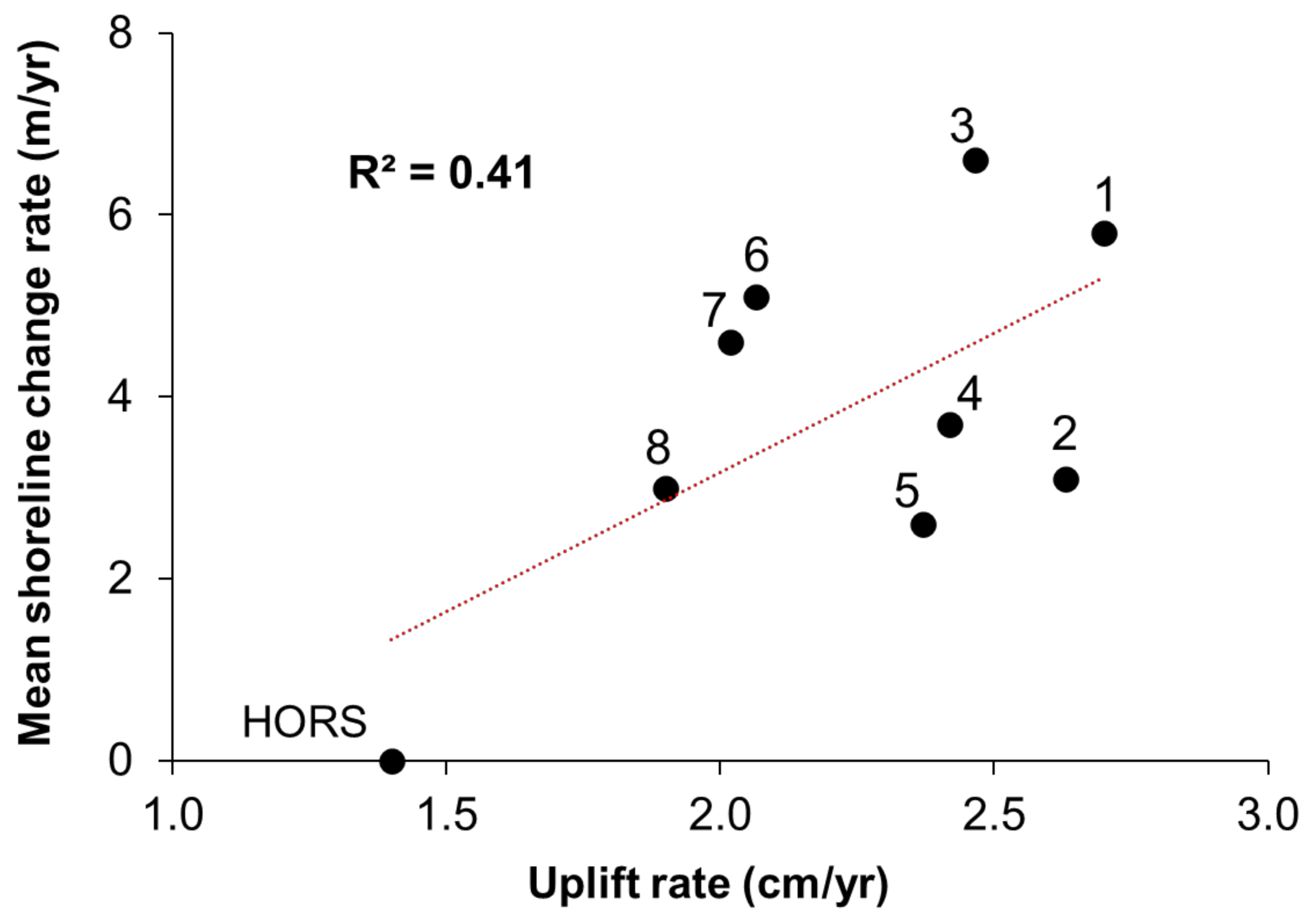
Publisher’s Note: MDPI stays neutral with regard to jurisdictional claims in published maps and institutional affiliations. |
© 2021 by the authors. Licensee MDPI, Basel, Switzerland. This article is an open access article distributed under the terms and conditions of the Creative Commons Attribution (CC BY) license (https://creativecommons.org/licenses/by/4.0/).
Share and Cite
Nguyen Hao, Q.; Takewaka, S. Shoreline Changes along Northern Ibaraki Coast after the Great East Japan Earthquake of 2011. Remote Sens. 2021, 13, 1399. https://doi.org/10.3390/rs13071399
Nguyen Hao Q, Takewaka S. Shoreline Changes along Northern Ibaraki Coast after the Great East Japan Earthquake of 2011. Remote Sensing. 2021; 13(7):1399. https://doi.org/10.3390/rs13071399
Chicago/Turabian StyleNguyen Hao, Quang, and Satoshi Takewaka. 2021. "Shoreline Changes along Northern Ibaraki Coast after the Great East Japan Earthquake of 2011" Remote Sensing 13, no. 7: 1399. https://doi.org/10.3390/rs13071399
APA StyleNguyen Hao, Q., & Takewaka, S. (2021). Shoreline Changes along Northern Ibaraki Coast after the Great East Japan Earthquake of 2011. Remote Sensing, 13(7), 1399. https://doi.org/10.3390/rs13071399





